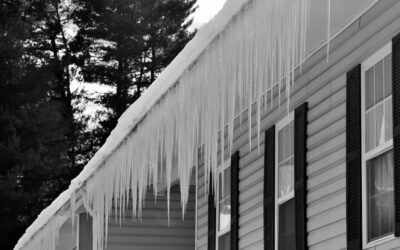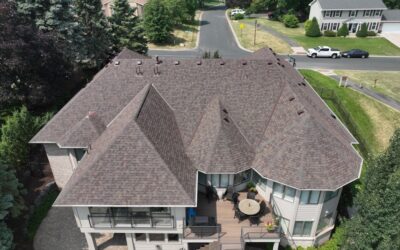A roof inspection is more than a quick glance at your shingles—it’s a detailed evaluation of your home’s first line of defense. Whether you’re dealing with storm damage, routine maintenance, or prepping to buy or sell a home, knowing the things that should be included in a roof inspection is key to preventing costly surprises.
At Keystone Roofing and Restoration, we believe in thorough, honest inspections that give homeowners real peace of mind. A well-done roof inspection identifies current issues and pinpoints vulnerabilities before they turn into expensive repairs. In this guide, we’ll walk you through what a professional roof inspection should include and why each element matters.
Why Roof Inspections Are Essential
Roofs are constantly exposed to sun, wind, rain, hail, and snow—especially in areas like Minneapolis where the seasons can be extreme. Over time, even the most durable roofing systems can show signs of wear. A proper inspection helps catch those issues early.
According to the Federal Emergency Management Agency (FEMA), regular roof assessments can greatly reduce a home’s risk of structural damage and water intrusion [source].
If your last roof checkup was over a year ago—or after a major storm—it’s time to schedule an inspection and ensure all critical areas are properly evaluated.
1. Roof Covering Materials
One of the first things that should be included in a roof inspection is an assessment of the primary roofing material. This includes asphalt shingles, metal panels, cedar shakes, tiles, or flat roofing membranes.
What Inspectors Look For:
- Cracked, curling, or missing shingles
- Loss of granules on asphalt shingles
- Rust or corrosion on metal roofing
- Dislodged or broken tiles
- Shrinking or punctures in membrane roofs
Damage to roof coverings can indicate deeper issues underneath. Even a small area of missing material can lead to leaks and structural concerns.
2. Flashing and Seals
Flashing refers to the thin material installed around roof features like chimneys, skylights, and vents to prevent water from entering vulnerable joints.
Key Flashing Areas to Inspect:
- Chimney flashing
- Skylight seals
- Roof-to-wall transitions
- Pipe boots and plumbing vent stacks
Improperly installed or deteriorated flashing is one of the most common sources of roof leaks. During an inspection, we check for cracks, rust, separation, and sealant failure.
3. Roof Deck and Underlayment (Where Accessible)
Beneath your shingles or roofing material lies the roof deck—a layer of wood sheathing that forms the structural foundation. The underlayment sits between the deck and the outer material, providing extra moisture protection.
What We Check For:
- Signs of sagging or soft spots
- Warping or rotting wood
- Water stains or mold growth
- Gaps or deterioration in underlayment (especially after leaks)
Although these layers are often hidden, signs of damage can sometimes be detected through attic access or visible roof deformation. Catching early decay can prevent expensive structural repairs.
4. Gutters and Downspouts
Gutters and downspouts are vital to managing roof drainage. Poorly maintained gutters can cause water to back up onto the roof, leading to rot, ice dams, and foundation damage.
Included in the Gutter Inspection:
- Blockages from leaves or debris
- Sagging or disconnected gutter sections
- Rust, cracks, or leaking joints
- Proper downspout placement and drainage away from the home
The U.S. Department of Energy recommends clean, functioning gutters as part of a water management system to protect insulation and reduce moisture intrusion [source].
5. Soffits, Fascia, and Eaves
These roof edge components help with ventilation and water management while protecting the underside of the roofline.
Inspection Checklist Includes:
- Rot or soft spots in wood or composite materials
- Insect or animal nesting signs
- Cracks or warping
- Proper sealing and paint protection
Problems in these areas can allow moisture and pests into your attic or roof structure.
6. Ventilation Systems
Good ventilation helps regulate attic temperature, reduce humidity, and extend the life of your roof. Poor ventilation can cause condensation, mold growth, and warped decking.
What Roofers Inspect:
- Ridge vents, soffit vents, and gable vents
- Obstructions or blockages
- Signs of mold or heat damage in attic areas
- Proper balance of intake and exhaust airflow
Inadequate ventilation is a common issue, especially in older homes or improperly installed roofing systems. It’s one of the most important things that should be included in a roof inspection for long-term roof health.
7. Chimneys, Skylights, and Roof Penetrations
Roof features like chimneys and skylights require special attention because they interrupt the flow of shingles and underlayment, making them vulnerable to leaks.
Inspection Focus Includes:
- Cracked or deteriorated caulking
- Loose or damaged flashing
- Water staining around penetrations
- Cracks in skylight glass or seams
If these features are improperly sealed, they can become major sources of leaks.
8. Interior Inspection (Attic and Ceiling Areas)
An exterior inspection only tells part of the story. Inspecting interior spaces like the attic or upper floors reveals damage that may not be visible from outside.
Key Interior Indicators:
- Water stains on ceilings or rafters
- Wet or moldy insulation
- Sunlight coming through the roof deck
- Musty odors or signs of mildew
If you’re not checking the attic during a roof inspection, you’re missing a major opportunity to detect hidden issues.
9. Storm Damage and Wind Uplift
After a storm, especially one involving hail or high winds, it’s critical to check for impact damage and displaced shingles.
Common Signs of Storm Damage:
- Dented shingles from hail
- Lifted or blown-off shingles
- Exposed underlayment
- Damage around vents or chimneys
These inspections are especially important for insurance claims and should be conducted promptly after the event.
10. Roof Drainage and Slope Evaluation
Your roof’s slope affects how water drains and whether certain areas are prone to pooling or ice dams. A proper inspection includes evaluating the flow of water off your roof.
What We Assess:
- Evidence of ponding water
- Ice dam formation history
- Proper slope for the roofing material
- Debris buildup in valleys
Incorrect drainage can accelerate material deterioration and lead to structural water damage.
11. Skylight and Solar Panel Integration (if applicable)
For homes with solar panels or skylights, roof inspections must include the systems themselves and how they interact with the roofing structure.
Inspection Points:
- Integrity of roof penetrations
- Proper flashing around mounts
- Signs of water pooling or leaks under panels
- Warranty-compatible installation practices
Improper installation can void warranties or create leak paths, so regular evaluation is essential.
Why a Professional Roof Inspection Matters
Some homeowners try to assess their roofs from the ground or with basic tools. While that’s better than nothing, a certified roofing professional can detect subtle problems you might miss and ensure your inspection meets building codes, warranty standards, and insurance requirements.
Regular roof inspections also:
- Maintain your roof’s warranty (many manufacturers require documentation of regular inspections)
- Support insurance claims in the event of storm damage
- Help you plan ahead for future roof repairs or replacement
Get a Complete Roof Inspection with Keystone Roofing and Restoration
Every roof tells a story—and we know how to read it. At Keystone Roofing and Restoration, our comprehensive inspection process covers all the things that should be included in a roof inspection to protect your home, catch damage early, and give you complete confidence in your roof’s condition.
Whether you need a routine seasonal checkup, a post-storm inspection, or you’re preparing to buy or sell a home, our expert team is ready to help.
Protect your investment—start with your roof.
Get a free estimate now and schedule your full roof inspection with Keystone Roofing and Restoration.





